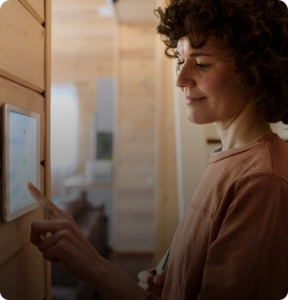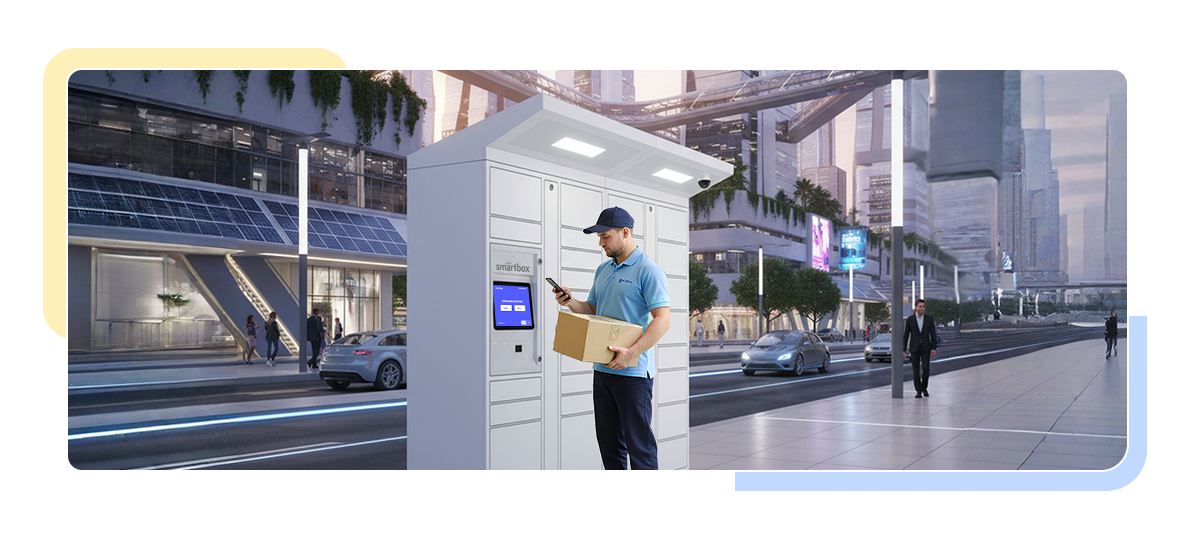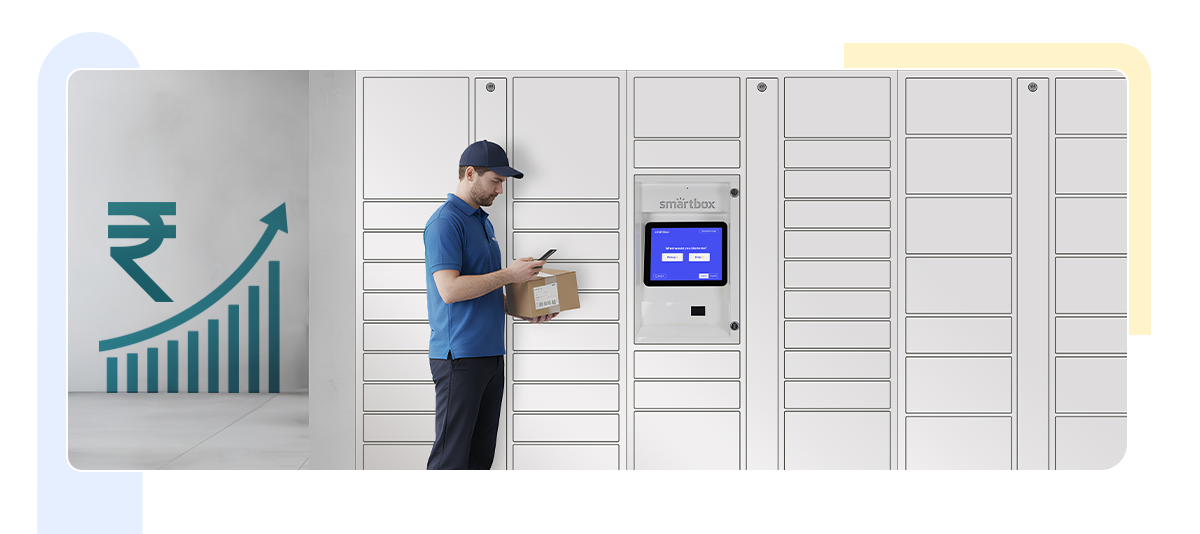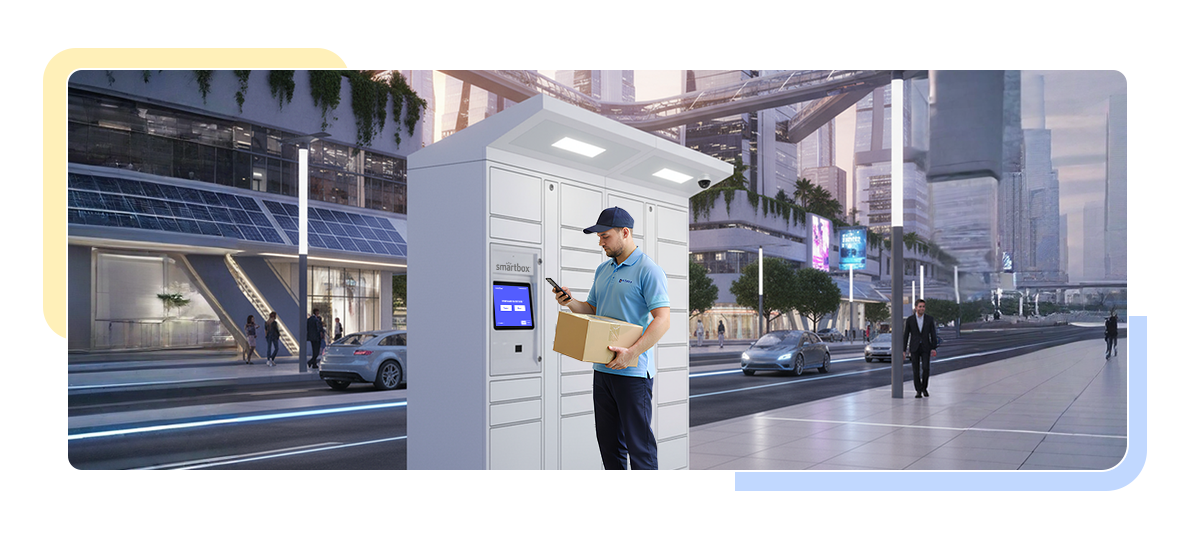The rise of e-commerce has transformed how we shop, but it has also created a complex challenge for our cities: the last mile. This final step of the delivery process, from a local hub to your doorstep, is often the most expensive and inefficient part of the supply chain. It contributes to traffic congestion, carbon emissions, and the logistical headache of missed deliveries. Smart cities are now turning to an innovative solution: public smart locker networks. This city-wide locker infrastructure is revolutionizing urban logistics and redefining the future of parcel pick up and delivery.
This post will explore how municipal smart locker network deployment is helping cities become more efficient, sustainable, and convenient. We will cover the benefits of this approach, the role of public-private partnerships, and the technology that makes it all possible.
What Are Public or Open Smart Locker Networks?
A public smart locker network is a system of secure, electronically controlled compartments placed in accessible public locations like transit hubs, residential buildings, and retail centers. Unlike private lockers dedicated to a single carrier, these shared locker networks are often carrier-agnostic, meaning any delivery service can use them.
This shared locker infrastructure for city logistics acts as a central drop-off and pick-up point. Instead of making dozens of individual stops, a courier can deposit multiple packages at a single smart locker system. Residents then receive a notification with a unique code to retrieve their items at their convenience. This streamlines the entire commercial parcel delivery process, benefiting everyone involved.
The Benefits of City-Wide Locker Infrastructure
Implementing a city parcel locker as a public service offers a wide range of advantages for municipalities, businesses, and residents. These systems address some of the most pressing issues facing modern urban environments.
Reducing Congestion and Emissions
Last-mile delivery vehicles are a major source of traffic and pollution in cities. They often double-park, block traffic lanes, and make frequent stops, adding to gridlock. A municipal smart locker network consolidates delivery points, drastically reducing the number of vehicle miles traveled. One driver can serve an entire neighborhood by visiting a few strategically placed locker banks instead of hundreds of individual addresses. This consolidation leads to fewer delivery trucks on the road, less congestion, lower fuel consumption, and a significant reduction in CO2 emissions.
Enhancing Convenience and Security
For residents, missed delivery notices are a common frustration. Public smart lockers eliminate this problem by providing a secure and reliable option for parcel pick up and delivery. You no longer need to wait at home for a package or worry about it being stolen from your porch. You can collect your items 24/7 from a convenient location, fitting it seamlessly into your daily routine. This secure asset inventory system ensures your packages are safe until you are ready to retrieve them.
Increasing Efficiency and Lowering Costs
Failed first-time deliveries are costly for logistics companies. Redeliveries increase fuel and labor expenses, cutting into already thin margins. Shared locker networks boast a near-perfect first-time delivery success rate. This efficiency translates into significant cost savings for carriers, which can lead to more competitive shipping prices for consumers and businesses. The locker network system software optimizes routes and consolidates drops, further enhancing operational efficiency.
The Power of Public-Private Partnerships
The most successful deployments often involve a public-private partnership parcel locker system. In this model, city governments collaborate with a private smart lockers company to fund, install, and operate the network.
Here’s how it typically works:
- The City: Provides access to public land and spaces, helps with zoning and permits, and integrates the locker network into its urban planning strategy. The city’s role is to ensure the system serves the public good.
- The Private Partner: A specialized smart lockers company brings the technology, operational expertise, and capital investment. They manage the installation, maintenance, and the underlying supply chain software that powers the network.
This collaborative approach allows cities to leverage private sector innovation and efficiency while ensuring the municipal parcel lockers meet public needs for accessibility and affordability. It’s a winning formula for creating a robust and sustainable shared locker infrastructure for city logistics.
Challenges and Solutions for Urban Deployment
While the benefits are clear, cities must address several challenges when they decide to install public smart lockers in urban areas.
- Space and Location:Finding suitable locations in dense urban environments can be difficult. Lockers need to be accessible, secure, and have access to power andinternet connection.
- Solution: Cities can identify underused public spaces near transit stations, in public housing complexes, libraries, or even on wide sidewalks. Partnering with private property owners like grocery stores and office buildings can also expand the network’s reach.
- Technology Integration:A new smart locker system must integrate with the existinglogistics ecosystem. This means the locker network system software needs to be compatible with the systems used by various couriers.
- Solution: Adopting open-API platforms is key. An open system allows any carrier to connect to their delivery management software, ensuring the network is truly carrier-agnostic. This requires collaboration between the smart locker company and major delivery firms.
- Public Adoption:Residents need to understand and trust the new system.
- Solution: Public awareness campaigns are essential. Cities and their partners should launch marketing initiatives to explain the benefits and provide clear instructions on how to use municipal parcel lockers. Offering initial incentives, like small delivery discounts, can also encourage early adoption.
The Technology Powering the Network
A successful municipal smart locker network deployment relies on sophisticated technology working in harmony. The physical smart locker system is just one piece of the puzzle.
Behind the scenes, powerful locker network system software manages the entire operation. This platform handles everything from assigning available lockers and generating access codes to monitoring usage and providing analytics. It also functions as a real-time asset inventory system, tracking every package from drop-off to pick up.
This advanced supply chain software is the network’s central brain, ensuring seamless communication between couriers, the lockers, and the end consumer. A reliable smart lockers company provides not only the hardware but also this critical software and ongoing support.
Paving the Way for a Smarter Urban Future
Public smart locker networks are more than just a convenient way to receive packages. They represent a fundamental shift in how we think about urban logistics. By consolidating deliveries, reducing vehicle traffic, and creating a more efficient system for everyone, cities can become cleaner, less congested, and more livable.
As e-commerce continues to grow, the need for innovative last-mile solutions will only become more urgent. The strategic deployment of a city parcel locker as a public service, supported by strong public-private partnerships and advanced technology, offers a clear path forward. This shared locker infrastructure is a cornerstone of the smart city, reimagining the last mile for a more sustainable and efficient tomorrow.
SmartBox: Enabling Smarter Urban Deliveries
SmartBox is transforming how cities manage last-mile logistics with its carrier-agnostic smart locker systems. Designed for seamless integration and sustainability, SmartBox lockers help reduce delivery congestion, cut emissions, and enhance citizen convenience. Through public-private partnerships, SmartBox empowers municipalities to build connected, efficient, and future-ready locker networks that redefine urban deliveries.
























